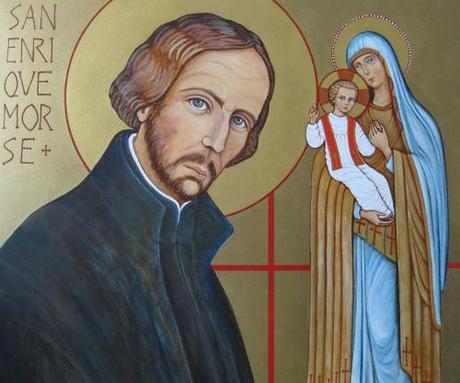
Today, February 1st, we celebrate St. Henry Morse, a martyr for the Catholic Faith in the midst of the Protestant Reformation.
He was born in 1595 at Brome in Suffolk, England. His parents brought him up in the Protestant faith. However, while he was studying law in London, he decided to become a Catholic. Therefore, at the age of 23, he went to Douai and was received into the Catholic Church.
There in Douai, he felt called to the priesthood, wherein he began his studies there, finishing them in Venerabile at Rome where he was ordained a Jesuit priest.
In 1624, he landed at Newcastle, and was thereafter arrested and imprisoned in the castle at York. Being prudent and prepared, Henry received the agreement of the father general of the Society of Jesus that he should be admitted to the Society in England. It so happened that Father John Robinson, a Jesuit priest also, was imprisoned at York. Accordingly, the three years that Henry spent in prison constituted his novitiate, and he there made his vows. Eventually, he was released but was banished, so he traveled to Flanders and for some time was the chaplain to the English soldiers serving the king of Spain there.
In 1633, Father Henry went back to England, and under a different name, Cuthbert Claxton, performing his priestly duties in London. During the horrible plague epidemic of 1636-1637, he visited 400 infected families that were set forth upon a list, who were both Catholic and Protestant, giving them both physical and spiritual assistance. Because of Father Henry’s loving example, approximately 100 families reconciled with the Catholic Church. Remarkably, Father Henry caught the plague three times, but each time, he recovered. His superiors warned him to be careful with his zeal, so as not to jeopardize his life.
Nevertheless, the authorities arrested Father Henry charging him with being a priest and for “perverting 560 of his Majesty’s Protestant subjects in and about the parish of St. Giles in the Fields.” He was found not guilty on the latter-mentioned charge, but of course on the first charge of being a priest, he was found guilty. Incredibly, Queen Henrietta Maria intervened and thus, Father Henry was released on bail of 10,000 florins.
A royal proclamation was made ordering all Catholic priests to leave England on or before April 7, 1641. Reluctantly, Father Henry obeyed the order because he did not want to implicate or involve his sureties. So, once again, he went to serve the English troops abroad.
In 1643 he was sent back to England, working in the north for 18 months. He was then apprehended while performing a sick-call on the borders of Cumberland. But with the help of a Catholic wife of one of his captors, he escaped. Six weeks later, he was again arrested and spent weeks in jail in Durham. He was taken to Durham and then to London. Finally, at the bar of Old Bailey he was sentenced to death based upon his previous conviction nine years earlier.
On February 1, 1645, Father Henry Morse celebrated his last Mass of the Most Holy Trinity, and was drawn on a hurdle by four horses to Tyburn. Before he died, he told the people that he was dying for his Catholic Faith, that he had worked for the good of the people of his country, that he had no knowledge of any plots against the king. He prayed aloud for himself and his persecutors and for the kingdom of England. The cart was drawn away.
St. Henry Morse was canonized a saint, one of the holy Forty Martyrs, in 1970.
As I have stated before, I have a particular love and attachment for the Forty Martyrs of England, as I do also for St. Thomas More. I pray today that St. Henry Morse help us to have that same courage, resoluteness of belief, determination and most of all, love, to stand up for our Faith and for what we believe. Lord knows that in the present day that we live, we are experiencing horrific “in your face” evil constantly. St. Henry, we love you and thank you!
With love and respect,
Joan
Sources: Vatican website; Butler’s Lives of the Saints, edited by Michael Walsh

